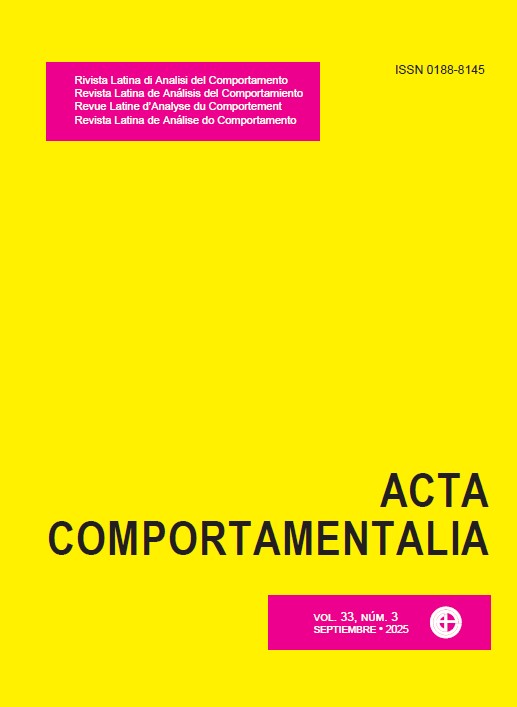Food Selectivity: Effects of an Intervention in Children With ASD
DOI:
https://doi.org/10.32870/ac.v33i3.88686Keywords:
food selectivity, autism spectrum disorder, instructions, shape manipulation, children, applied behavior analysisAbstract
This study aimed to assess whether a procedure that used a sequence of instructions (SI) for successive approximations of eating behavior and that manipulated food shape (FS) would improve the acceptance of rejected fruits by children with Autism Spectrum Disorder (ASD). Additionally, it was intended to verify whether acceptance would be maintained after fading the modified shape. The participants were two boys diagnosed with ASD, aged 3 and 8. The sessions took place at the participant’s home during snack times between main meals. The procedure had three phases: (1) Pre-test, which proved the rejection of the fruit; (2) Sequence of Instructions (SI), in which instructions were used so that successive approximations to the behavior of eating the food occurred; and (3) Shape Manipulation (SM), in which the fruit was initially presented in playful shapes and then had the shape faded until it was presented in the regular shape. In both phases, two fruits were presented to each child. The selection was based on the list of fruits in the Food Guide for the Brazilian Population (2008), with the selection criteria were rejection and seasonality, prioritizing taste and color. The dependent variables were following the instructions, consumption of each fruit and the frequency of active refusal responses. The results showed that in the SI Phase, both participants consumed the previously rejected fruits. In the SM Phase, consumption was observed for only one of the participants. The follow-up sessions occurred 40 days after the intervention ended, revealed that consumption of the fruit used during the intervention was maintained. To help participants’ mothers include new foods into their diets, materials were prepared for each family based on the results obtained. The intrasubject design used in this study made it possible to verify the need for individualized interventions that take into account the history and characteristics of each participant. The present study provides alternatives to treating of food refusal n the absence of escape extinction.
Downloads
Downloads
Published
How to Cite
Issue
Section
License

<a rel="license" href="http://creativecommons.org/licenses/by-nc-sa/4.0/"><img alt="Licencia de Creative Commons" style="border-width:0" src="https://i.creativecommons.org/l/by-nc-sa/4.0/88x31.png" /></a><br />Este obra está bajo una <a rel="license" href="http://creativecommons.org/licenses/by-nc-sa/4.0/">licencia de Creative Commons Reconocimiento-NoComercial-CompartirIgual 4.0 Internacional</a>.






